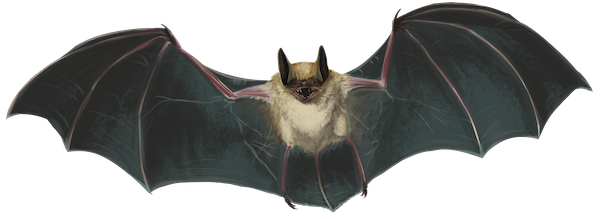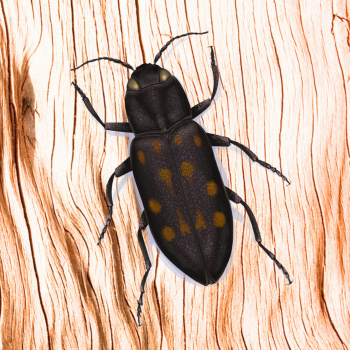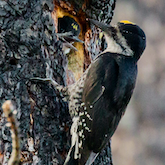The Sierra Nevada mountains of northern California are a good place to go bat watching– the region is home to 17 species of these fascinating flying mammals. But fires are also common in these forests and they change habitats in sudden and dramatic ways. How does this affect the bats that live there? IBP researchers, along with colleagues from the Missouri Cooperative Fish and Wildlife Research Unit and the USDA Forest Service, recently looked at bat communities in the Plumas National Forest and how they respond to fire.

Dr. Rachel Blakey
Their research, published in the journal Ecology and Evolution, examines how relationships between fire regimes and bat traits, like body shape or frequency of echolocation calls, can help us understand how forest fire affects bat communities. Lead author and IBP researcher Rachel Blakey, has long been interested in how animals, especially flying predators, adapt to the structure of their environment. At IBP she also works on feathered predators like Spotted Owls and Northern Goshawks.
Animals adapt to the structure of their environment, and among those adaptations is body shape. Think of some birds that live in dense forest: a Winter Wren, a Ruffed Grouse or perhaps a Wood Thrush. Now picture their wings, specifically the shape of their wings. Next think of some birds that fly in open habitats like grasslands, the tundra, or over the ocean: maybe a Northern Harrier, a Common Tern, or a gyrfalcon. How are their wings shaped?
Compared to the birds in open habitats, the birds that dwell in dense forest have relatively shorter, rounder wings. That's because this wing shape makes them more maneuverable through the clutter of vegetation in their habitat. Longer narrower wings enable faster, longer flight, but make it harder to execute sharp turns. While all broad generalizations have their exceptions, this relationship between wing shape and habitat structure holds up pretty well. It's probably no surprise that bird species have evolved wing shapes that maximize their ability to move through their habitat in flight from predators and in pursuit of food.

Myotis thysanodes, a clutter-adapted bat. Illustration by Lauren Helton
The same wing shape and habitat generalization also applies to the only mammals with wings– bats. The tiny Western long-eared myotis (Myotis evotis) which forages in forested habitats, has relatively short, wide wings compared to those of the hulking Western mastiff bat (Eumops perotis californicus), the largest North American bat. This bruiser has much longer and narrower wings and prefers to forage in more open habitats, where its wing shape gives it speed to chase down fast moving insects. Western long-eared myotis might be able to catch insects in open habitat too, but flying out in the open can expose them to predators. While maneuverable, their shorter wings may not give them the speed necessary to escape predators like hawks and owls.
Animals' sounds also evolve to suit their habitat. Grassland bird species like Savannah Sparrows or Horned Larks, and tundra species like a Lapland Longspur tend to have high pitched, complex songs. These sounds carry over distance just fine in their open habitats, allowing them to advertise to females or warn off territorial rivals. But species that live in densely vegetated habitat such as White-throated Sparrows, Varied Thrushes, and Ruffed Grouse use lower-pitched simpler sounds. That's because lower frequency sounds travel father in dense environments and simpler songs are distorted less by clutter in the environment. This is known as the "Acoustic Adaptation Hypothesis" which was proposed by ornithologist Eugene Morton in 1975.
But in bats, we see a very different relationship between sound and habitat. Species that forage in habitats with denser vegetation tend to have higher frequency, wider bandwidth echolocation calls. That's because their sounds are intended to bounce off clutter in the environment, not transmit through it to reach distant mates or rivals. Echolocation calls help them locate obstacles and prey. Higher frequency, wider bandwidth echolocation calls help bats in dense environments differentiate their prey from the background vegetation. Bats that forage in open habitats have longer duration, lower frequency echolocation calls tuned to detect acoustic “glints” from insect wings at a distance.
Dr. Blakey and her colleagues found bats with traits suited for cluttered, densely vegetated environments less often in forest areas that had been severely burned or that burned frequently. That could mean bad news for these species as climate change leads to more frequent and more severe fires in the Sierra Nevada. However, these same changes could benefit bat species with traits adapted to open and edge habitats.
Blakey says the ability of fire to restructure habitats is important. "In the Sierra Nevada, we have a pretty diverse bat community with a range of adaptations-- a very big part of that is because of diversity in vegetation structure," she says, 'having that range of structures, mediated by fire, I think is part of the reason why we do have such a diversity of differently adapted bats."
She and her colleagues recommend that land managers hoping to maintain that bat diversity manage fires to promote "pyrodiversity" or diversity in age, size and severity of burned forest patches. Previous research by IBP scientists has shown that greater pyrodiversity also increases bird diversity in the Sierra Nevada. So what's good for the bats is also good for the birds.






